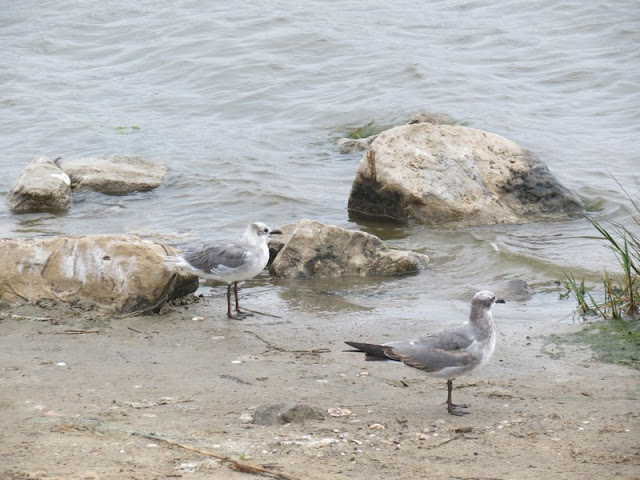There are 6 different genera of
carnivorous plants with a total of 45 species in the United States. These carnivorous plants can be categorized into 5 basic types, flytraps,
bladderworts, butterworts, sundews and pitcher plants. Of these five basic type only the the
Venus Flytrap is not found in the Big Thicket of Texas. On a recent trip to a couple of units of the
Big Thicket National Preserve I was able to photograph some pitcher plants. The species of pitcher plant that grows in this area is
Sarracenia alata, commonly known as Yellow Trumpets or Pale Pitcher. Unlike the other types mentioned pitcher plants are passive since they do not use movement in the capture and digestion of insects. Pitcher plants capture insects by luring them to the mouth of the trap color, nectar, and sent. Once they land on the lip and venture into the mouth, the insects slip on the waxy inner surface. As the insects slide down the funnel they are further impeded by downward pointing hairs lining the lower portion. Eventually ending up in the bottom of the pitcher where they drown in fluid the contains digestive enzymes. The digestive enzymes decompose the body so it can be absorbed, leaving only the exoskeleton.
 |
| Sarracenia alata |
 |
| Looking inside the funnel of Sarracenia alata |
 |
| Immature leaf of Sarracenia alata. |
The bug eating pitchers are not the only unusuall part of Sarracenia alata. The Pale Pitcher plant has a large greenish-yellow, downward hanging flower. The flower has five large sepals that form an umbrella over the flower and the five petals droop between the spaces of the style. The style forms a sort of upside-down umbrella that catches the pollen, which is scattered by the wings of bug that enter.
|
| Sarracenia flower, cutaway view, with english labels of anatomical parts (Photo credit: Wikipedia) |












.JPG)




.JPG)
.JPG)
.JPG)







